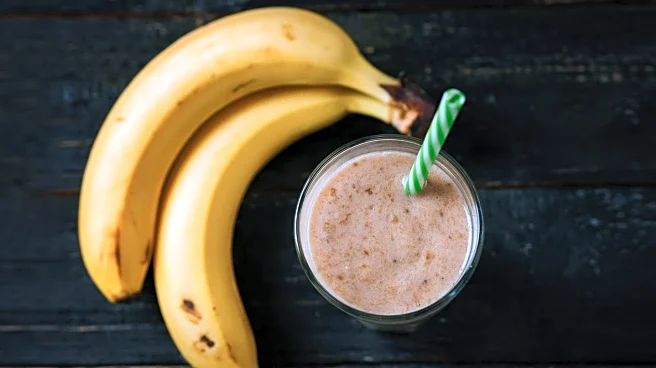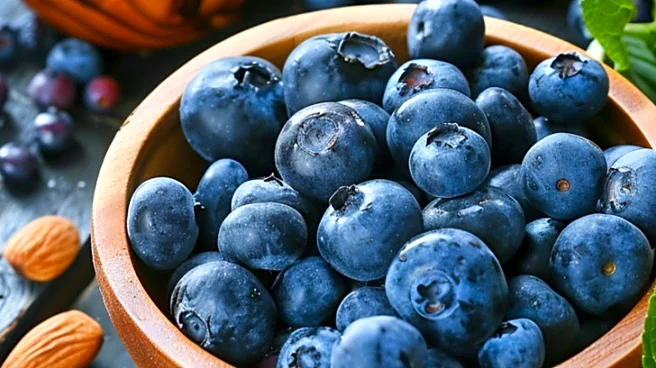What's Happening?
Recent research published in the journal Food and Function indicates that bananas, a common smoothie ingredient, may reduce the absorption of flavanols, which are beneficial antioxidants. The study involved
eight healthy volunteers who consumed two types of smoothies: one with bananas and berries, and another with only berries. Participants also took a flavanol capsule. Blood and urine samples showed that those who drank the banana smoothie had 84% lower flavanol levels compared to when they consumed the flavanol capsule, and lower levels compared to the all-berry smoothie. This suggests that bananas may interfere with the absorption of flavanols, which are known to protect against cell damage and support brain and heart health.
Why It's Important?
The findings are significant as they challenge the common perception of smoothies as universally healthy. Flavanols, found in foods like berries, apples, and cocoa, are crucial for reducing the risk of diseases such as cancer and heart disease. The study highlights the complexity of nutrient absorption and the potential for certain foods to inhibit the benefits of others. This could impact dietary recommendations and consumer choices, particularly for those seeking to maximize the health benefits of their diets. The research underscores the need for a nuanced understanding of food interactions and their effects on nutrient absorption.
What's Next?
While the study provides new insights, it was limited by its small sample size and focus on male participants, leaving questions about its applicability to a broader population. Further research is needed to confirm these findings and explore the mechanisms behind the interaction between bananas and flavanols. Dietitians may need to consider these interactions when advising clients on smoothie ingredients. Consumers might also become more discerning about their smoothie compositions, potentially leading to changes in the smoothie and functional beverage market.
Beyond the Headlines
The study raises broader questions about the interactions between different food components and their impact on health. It highlights the importance of considering not just the nutritional content of foods, but also how they interact with each other. This could lead to more personalized nutrition advice and a greater emphasis on food synergy in dietary planning. The findings may also prompt further investigation into other common food combinations and their effects on nutrient absorption.











